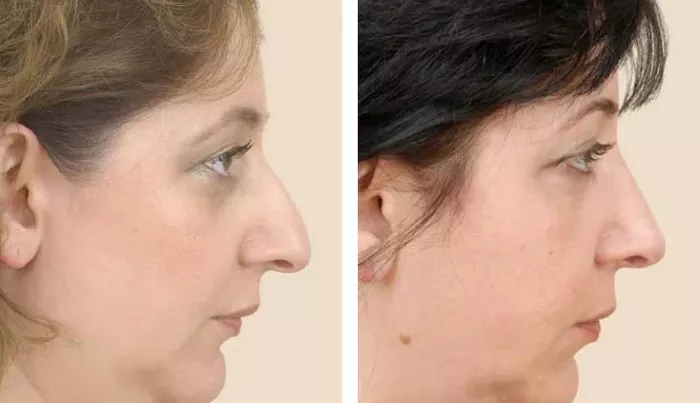Rhinoplasty, or nose job, is a popular cosmetic surgery that aims to improve the shape, size, or function of the nose. While rhinoplasty can enhance facial harmony and self-confidence, it also involves a significant recovery period and possible complications. Therefore, patients who have had rhinoplasty may wonder when they can safely undergo another cosmetic procedure, such as cheek fillers, to further enhance their facial features. In this article, we will explore the answer to the question “How long after rhinoplasty can I get cheek fillers?” based on the latest research and expert opinions.
The Importance of Timing and Safety in Cosmetic Surgery
Before we delve into the specifics of cheek fillers after rhinoplasty, let us first emphasize the importance of timing and safety in cosmetic surgery. Unlike some non-invasive or minimally invasive procedures, such as Botox or laser resurfacing, cosmetic surgery involves incisions, anesthesia, and tissue manipulation that can cause pain, swelling, bruising, scarring, infection, and other risks. Therefore, patients should not rush into getting multiple procedures too soon or without proper evaluation and preparation. Doing so can compromise the healing process, increase the risk of complications, and lead to unsatisfactory outcomes.
Moreover, patients should choose a board-certified plastic surgeon or facial plastic surgeon who has extensive training, experience, and expertise in both rhinoplasty and cheek fillers, as well as a good reputation and a clear communication style. Patients should also disclose their medical history, current medications, allergies, and expectations to the surgeon and follow their pre-operative and post-operative instructions carefully. By doing so, patients can minimize the risks and maximize the benefits of cosmetic surgery.
The Relationship Between Rhinoplasty and Cheek Fillers
Now, let us focus on the relationship between rhinoplasty and cheek fillers. Rhinoplasty can affect the appearance and proportion of not only the nose but also the surrounding facial structures, such as the cheeks, lips, and chin. Depending on the type and extent of rhinoplasty, the cheeks may appear more or less prominent, hollow, or asymmetrical. For example, if a patient has a droopy or long nasal tip, the cheeks may look flatter or wider due to the downward pull of the nasal muscles. Conversely, if a patient has a hump or bump on the nasal bridge, the cheeks may look fuller or rounder due to the visual balance of the face.
Cheek fillers, also known as dermal fillers or soft tissue fillers, are injectable substances that can add volume, contour, and lift to the cheeks and other areas of the face. The most common types of cheek fillers are hyaluronic acid fillers, such as Restylane, Juvederm, and Voluma, which are temporary and reversible, and calcium hydroxylapatite fillers, such as Radiesse, which are longer-lasting but also less flexible. Cheek fillers can also stimulate collagen production, improve skin texture and elasticity, and reduce the appearance of wrinkles and fine lines.
Therefore, cheek fillers can complement rhinoplasty by enhancing the overall balance and harmony of the face, especially if the cheeks have lost volume or definition due to aging, weight loss, or genetics. However, cheek fillers should not be used as a substitute for rhinoplasty or as a way to correct major nasal or facial deformities. Cheek fillers should also be used judiciously and conservatively, as overfilling or asymmetry can create an unnatural or disproportionate look.
The Ideal Timing for Cheek Fillers After Rhinoplasty
So, how long after rhinoplasty can I get cheek fillers? The short answer is at least six months, and preferably one year, after rhinoplasty. The reason for this is that rhinoplasty involves reshaping the nasal bones, cartilage, and soft tissues, which can cause swelling, bruising, and inflammation that can take several months to subside. Moreover, the nasal skin and muscles may need time to adapt to the new nasal shape and position, which can affect the appearance of the cheeks and other facial features. Therefore, undergoing cheek fillers too soon after rhinoplasty can interfere with the healing process, increase the risk of complications, and compromise the final results.
According to a study published in the Aesthetic Surgery Journal in 2018, the ideal timing for cheek fillers after rhinoplasty is six months or more, based on the analysis of 50 patients who underwent rhinoplasty and cheek augmentation with hyaluronic acid fillers. The study found that patients who received cheek fillers within six months of rhinoplasty had a higher risk of complications, such as swelling, bruising, and irregularities, compared to those who waited longer. The study also suggested that patients who had rhinoplasty and cheek fillers together or within a short interval may have less natural-looking results due to the interplay of the nasal and cheek structures.
Therefore, patients who are considering cheek fillers after rhinoplasty should wait for at least six months and preferably one year, depending on their individual healing process and the advice of their surgeon. Patients should also inform their surgeon about their previous rhinoplasty and any residual swelling or asymmetry in the nasal or cheek area. Patients should also choose a filler that is compatible with their skin type and goals, and avoid fillers that are too thick, heavy, or permanent, as they can cause lumps, bumps, or migration.
Conclusion
In conclusion, rhinoplasty and cheek fillers are two cosmetic procedures that can enhance the appearance and proportion of the face. However, patients should not rush into getting cheek fillers after rhinoplasty too soon or without proper evaluation and preparation. Patients should wait for at least six months and preferably one year after rhinoplasty to allow for complete healing and stability of the nose and surrounding tissues. Patients should also choose a board-certified plastic surgeon or facial plastic surgeon who has extensive training, experience, and expertise in both rhinoplasty and cheek fillers, and follow their pre-operative and post-operative instructions carefully. By doing so, patients can achieve safe, natural-looking, and satisfying results that enhance their self-confidence and well-being.
[inline_lated_posts title=”您可能感兴趣” title_align=”left” style=”list” number=”6″align=”none” ids=”14933,14893,14896″ by=”categories” orderby=”rand” order =“DESC” hide_thumb =“否”thumb_right =“否”视图=“否”日期=“是”grid_columns =“2”post_type =“”税=“”]


